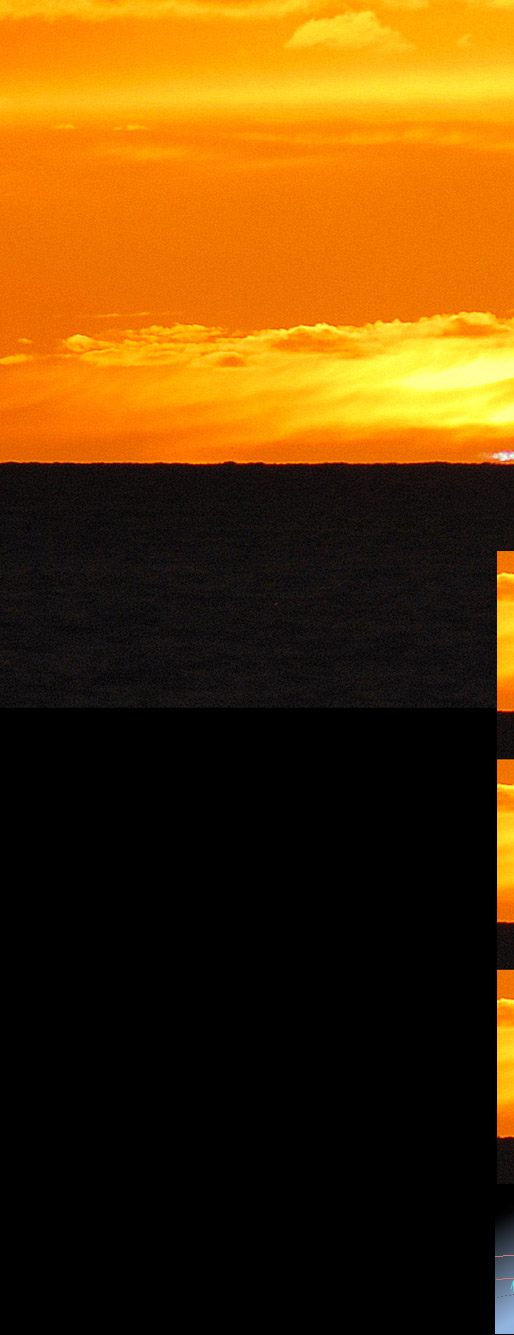 |
 |
|
 |
| Blue Flash ~Images by Mark Evans. "After a day at Kenfig beach, near Porthcawl, S. Wales, I decided to stay for the sunset over Swansea Bay and the Bristol Channel. As the sun approached the horizon I had a feeling that a green flash was a distinct possibility, so I fitted the 300mm lens to my Nikon D60 and waited, trying all the while to resist the temptation to look at the sun. Eventually, as the last fraction of the sun was sinking to the horizon, I watched through the viewfinder and was delighted when as expected, a top-knot formed and detached from the main disc of the sun, but instead of the green I'd expected, it seemed to be distinctly blue. I was so taken aback, that for a moment I forgot to take any photos, but then snapped out of it and managed to get these three shots. " ©Mark Evans, shown with permission. The flash is likely an inferior-mirage type produced by refraction through a layer of warmer air beneath cooler. This is the classical flash occurring just above the horizon as the last sliver of sun disappears. Warning signs are a distorted sunset and a choppy horizon that is actually the mirage boundary. A blue flash signals strong temperature gradients and is a rarer sight than the already rare green flash. |
 |
 |
|
 |

| About - Submit | Optics Picture of the Day | Galleries | Previous | Next | Today |